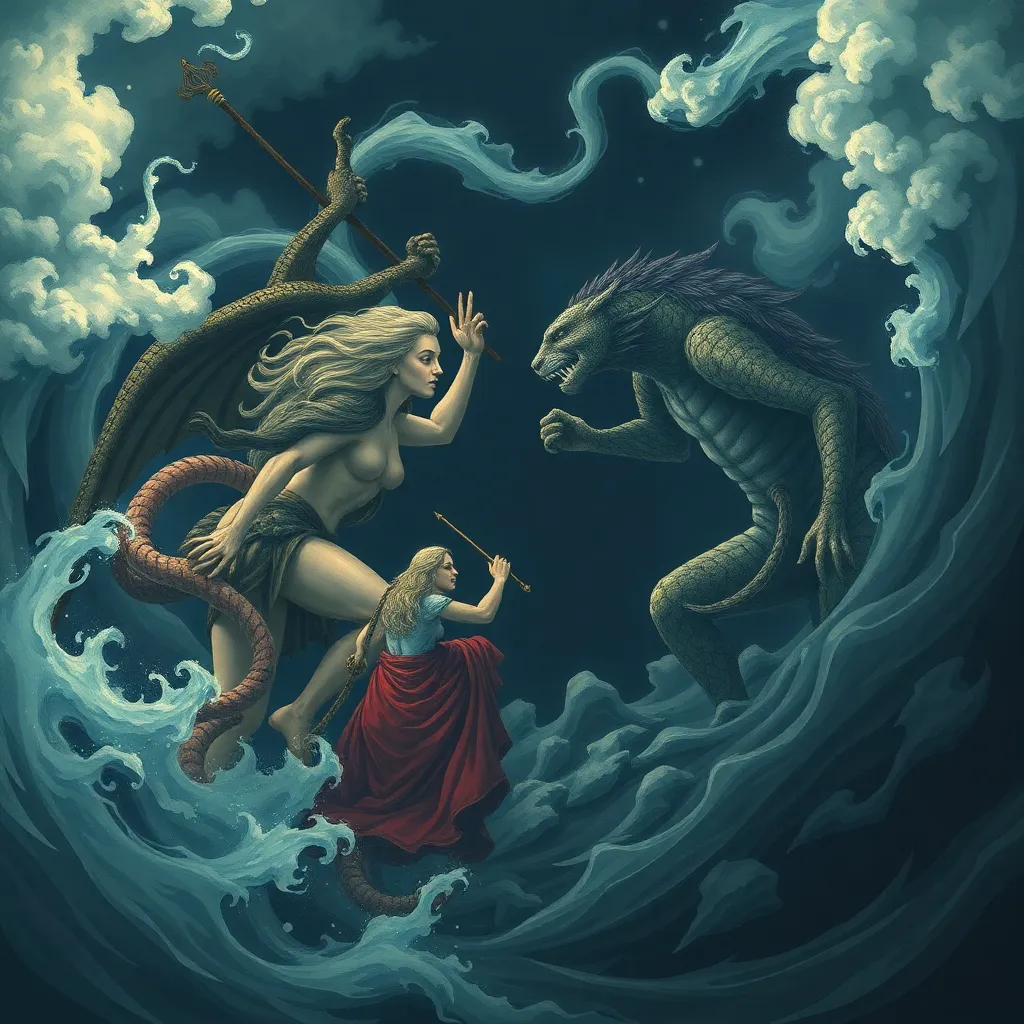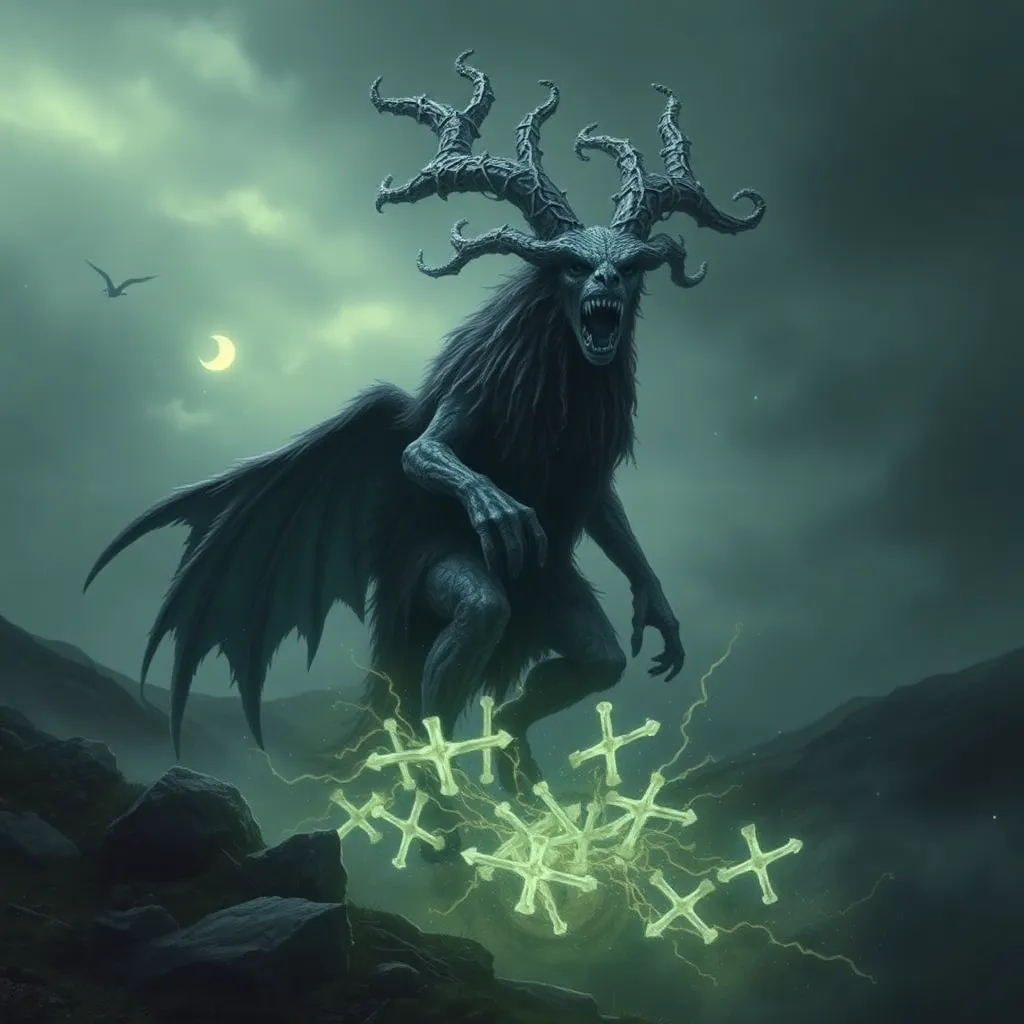The Four Symbols of Chinese Mythology
Chinese mythology is rich with symbolism, and among the most iconic symbols are the Dragon, Phoenix, Qilin, and Turtle. These four celestial beings represent fundamental aspects of the Chinese worldview and hold a significant place in Chinese culture, art, and literature.
I. The Dragon: Symbol of Power and Wisdom
The Dragon is perhaps the most recognizable symbol in Chinese mythology. It is a majestic creature associated with power, wisdom, and good fortune. In Chinese folklore, dragons are often depicted as benevolent beings who bring rain and prosperity. They are also seen as guardians of sacred places and objects.
The Dragon's physical attributes symbolize its strength and power. Its long, serpentine body represents flexibility and adaptability. Its sharp claws and teeth symbolize its ferocity, while its scales symbolize protection and resilience.
In Chinese culture, the Dragon is often associated with the emperor and the imperial court. It is a symbol of authority, sovereignty, and divine mandate. The Dragon is also used as a symbol of auspiciousness and good luck, and it is often depicted in art and architecture to bring blessings and prosperity.
II. The Phoenix: Symbol of Rebirth and Transformation
The Phoenix is a mythical bird associated with rebirth, transformation, and beauty. In Chinese mythology, the Phoenix is said to live for 500 years, after which it bursts into flames and is reborn from its own ashes. This symbolizes the cycle of life, death, and rebirth.
The Phoenix is also associated with the sun and fire. Its bright plumage represents the warmth and radiance of the sun, while its long tail feathers symbolize the flames of transformation.
In Chinese culture, the Phoenix is a symbol of auspiciousness and good fortune. It is often depicted in art and literature as a symbol of love, peace, and harmony. The Phoenix is also a popular symbol of marriage, and it is often used to decorate wedding invitations and gifts.
III. The Qilin: Symbol of Good Fortune and Prosperity
The Qilin is a mythical creature associated with good fortune, prosperity, and protection. It is a hybrid creature with the body of a deer, the head of a dragon, and the tail of an ox. The Qilin is often depicted as a gentle and benevolent creature, and it is believed to bring blessings and good fortune to those who encounter it.
The Qilin's physical attributes symbolize its auspicious qualities. Its deer-like body represents gentleness and grace, while its dragon head represents power and wisdom. Its ox tail represents strength and determination.
In Chinese culture, the Qilin is a highly revered creature. It is often depicted in art and literature as a symbol of good fortune and prosperity. The Qilin is also a popular symbol of protection, and it is often used to decorate homes and businesses to ward off evil spirits.
IV. The Turtle: Symbol of Longevity and Endurance
The Turtle is a symbol of longevity, endurance, and wisdom. In Chinese mythology, the Turtle is said to live for thousands of years, and it is believed to possess the wisdom of the ages. The Turtle is also associated with the element of water, and it is often depicted as a symbol of fertility and abundance.
The Turtle's physical attributes symbolize its endurance and longevity. Its hard shell represents protection and resilience, while its slow and steady movements represent perseverance and determination.
In Chinese culture, the Turtle is a symbol of good fortune and longevity. It is often depicted in art and literature as a symbol of wisdom, stability, and endurance. The Turtle is also a popular symbol of wealth and prosperity, and it is often used to decorate homes and businesses to attract good fortune.
V. The Dragon and the Phoenix: Yin and Yang
The Dragon and the Phoenix are often depicted together as a symbol of yin and yang, the two opposing but complementary forces that make up the universe. The Dragon represents yang, the masculine principle, while the Phoenix represents yin, the feminine principle. Together, they symbolize the balance of opposites and the harmony of the natural world.
VI. The Qilin and the Turtle: Guardians of the Realm
The Qilin and the Turtle are often depicted as guardians of the realm, protecting it from evil spirits and other threats. The Qilin is said to be able to detect evil spirits and ward them off, while the Turtle is said to be able to protect against floods and other disasters.
VII. The Four Symbols in Art and Literature
The Four Symbols are frequently depicted in Chinese art and literature. They are found in paintings, sculptures, ceramics, and other forms of art. In literature, they are often used to symbolize characters or events. For example, the Dragon may represent a powerful and wise ruler, while the Phoenix may represent a beautiful and virtuous woman.
VIII. The Four Symbols in Astrology and Feng Shui
The Four Symbols are also used in Chinese astrology and feng shui. In astrology, they are used to represent the four seasons and the four directions. In feng shui, they are used to place objects and furniture in a way that creates a harmonious balance of yin and yang.
IX. The Cultural Significance of the Four Symbols
The Four Symbols are deeply embedded in Chinese culture. They represent fundamental aspects of the Chinese worldview and have been used for centuries to symbolize power, wisdom, good fortune, prosperity, longevity, endurance, yin and yang, and the balance of the natural world.
X. The Four Symbols in Modern Chinese Culture
The Four Symbols continue to be used in modern Chinese culture. They are found in everything from art and literature to architecture and fashion. They are also used in popular culture, such as in movies, TV shows, and video games. The Four Symbols are a powerful and enduring symbol of Chinese culture and continue to be a source of inspiration and meaning for people around the world.
FAQ
Q: What do the Four Symbols of Chinese Mythology represent?
A: The Four Symbols represent fundamental aspects of the Chinese worldview, including power, wisdom, good fortune, prosperity, longevity, endurance, yin and yang, and the balance of the natural world.
Q: How are the Four Symbols used in Chinese art and literature?
A: The Four Symbols are frequently depicted in Chinese art and literature. They are found in paintings, sculptures, ceramics, and other forms of art. In literature, they are often used to symbolize characters or events.
Q: What is the cultural significance of the Four Symbols?
A: The Four Symbols are deeply embedded in Chinese culture. They represent fundamental aspects of the Chinese worldview and have been used for centuries to symbolize power, wisdom, good fortune, prosperity, longevity, endurance, yin and yang, and the balance of the natural world.



